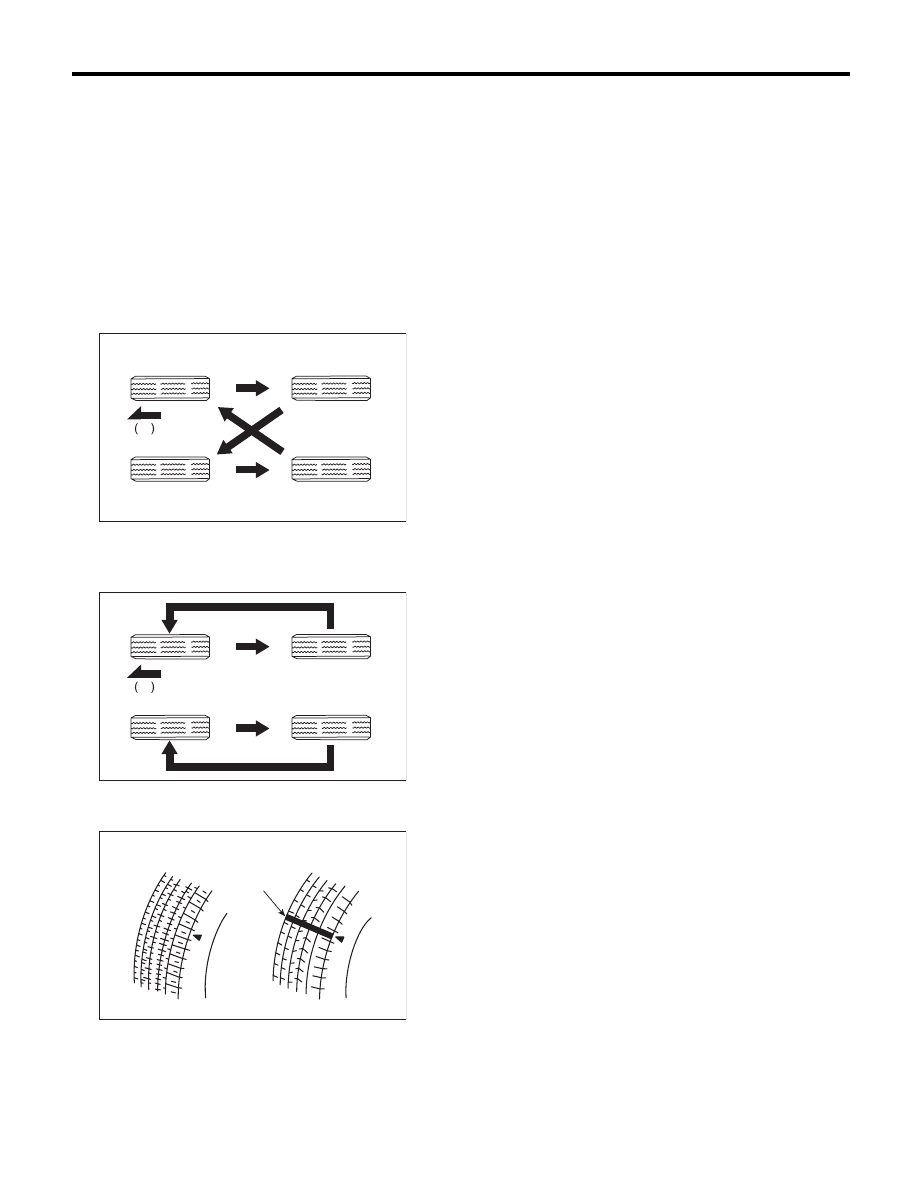Subaru Legacy IV (2008 year). Service manual - part 27

PM-48
Tire Rotation
PERIODIC MAINTENANCE SERVICES
23.Tire Rotation
A: INSPECTION
1) When the tread has worn down to less than 1.6
mm (0.063 in) or the wear indicator appears across
the tread, replace the tire. (Replace the right and
left tire as a set.)
2) If the tire appears to be worn unevenly, adjust
the wheel alignment.
3) Next, make a tire rotation between front and rear
as shown in the figure, make sure tires are worn
evenly.
• When the direction of tire rotation is not specified
• When the direction of tire rotation is specified
4) Re-register the transmitter ID when rotation was
performed. (3.0 L U4 model) <Ref. to TPM(diag)-
10, REGISTER TRANSMITTER ID, OPERATION,
Subaru Select Monitor.>
(1) Front
(1) Front
(A) New tread
(B) Damaged tread
(C) Tread wear indicator
WT-00113
1
WT-00115
1
PM-00080
(A)
(B)
(C)